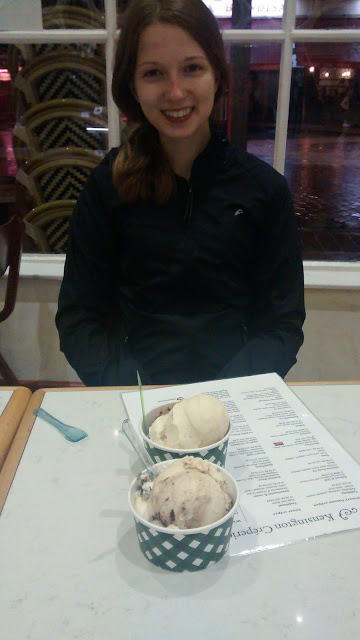| Professor Bunce started out with a general biology review, covering topics that we learn in first year biology and genetics at UFV, such as PCR and RT-PCR, reverse transcriptase, and cell lines. I was happy when he moved into deeper waters and began talking about specific blood cancers. According to Bunce, blood cancer research is leading the way in cancer research, because it is very easy to attain samples from diseased and non-diseased individuals and then compare. This is much easier than, say, asking a healthy individual for a slice of their brain to compare to a cancerous sample!
The graph Professor Bunce is pointing to in the image above depicts the survival rate of patients with chronic myeloid leukaemia over the course of fourteen years post diagnosis. That bottom line revealing a survival rate of only 8% was the prognosis when Professor Bunce began his studies as a cancer biologist. Today, thanks to researchers just like Bunce, survival rates are 92%!
What I really appreciated about Professor Bunce’s talk is how he described chronic myeloid leukaemia in great detail, starting with the formation of the Philadelphia chromosome and ending with how the BCR/ABL fused gene product that results binds ATP and results in constitutive activation of a protein. He discussed drugs that prevent this binding of ATP, including imatinib and nilotinib. The “ib” drugs all block the ATP binding site on the BCR/ABL fusion protein. Bunce also talked about how old drugs are being re-purposed to treat Burkitt’s lymphoma, a disease that occurs significantly in Africa, particularly those areas with large populations of mosquitoes. Bunce has carried out clinical trials to apply these re-purposed drugs in Malawi, and drugs originally marketed as contraceptive and cholesterol reducing drugs have shown great success in treating Burkitt’s lymphoma!
After Professor Bunce’s amazing lecture we fueled ourselves up with lunch before the INTEL & UNESCO Dialogue Session. We had Dr. Martina Roth and Rovani Sigamoney come from INTEL and UNESCO, respectively. After short talks from each, they turned the stage to us and asked what we think the solutions to the problems of our world are. They also encouraged us to ask specific questions about the work of INTEL or UNESCO. I asked if there were any specific initiatives aimed towards encouraging more women in science, and according to Roth, there are many. She did not specify which countries they serve, what they do, or if they have been successful. She did, however, say that all of the information is online, so online I shall go! |






